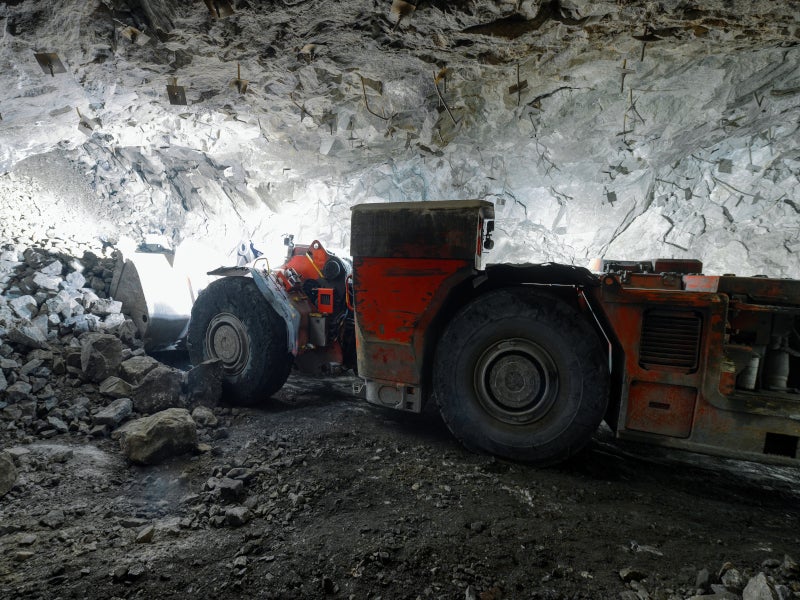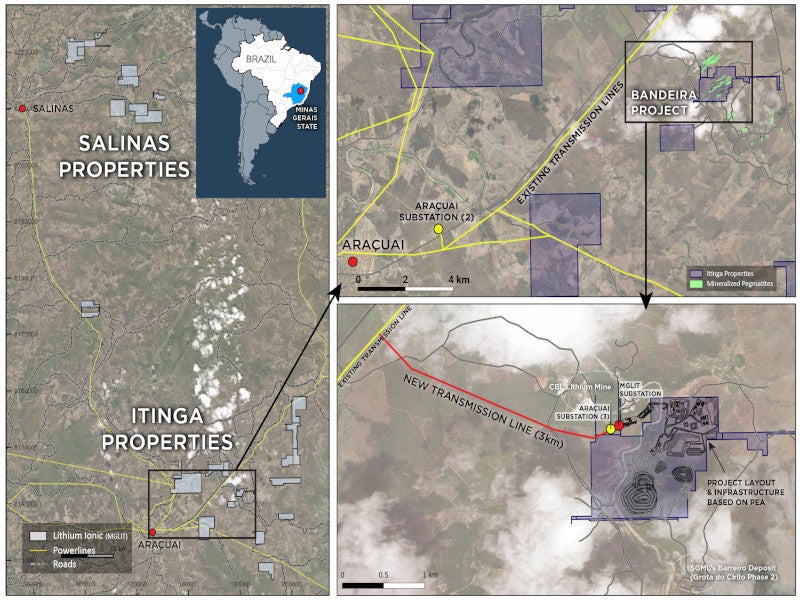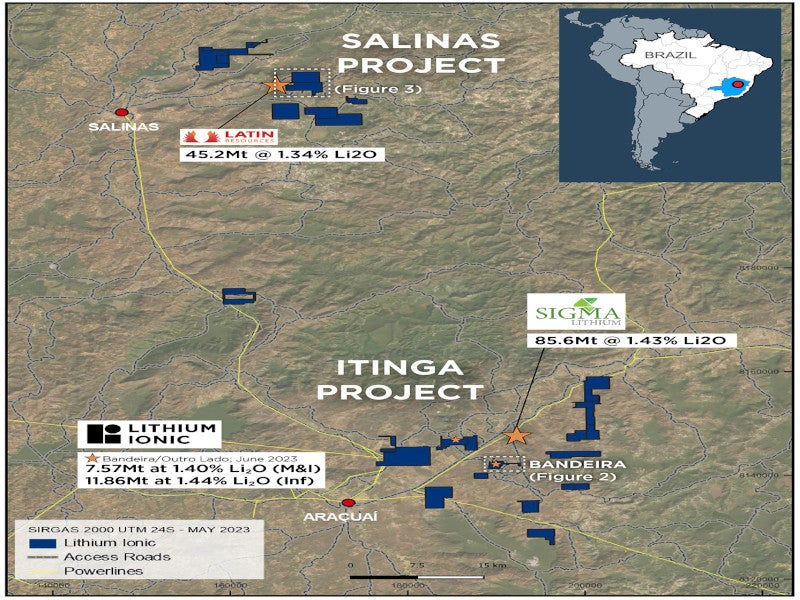The Bandeira lithium project, situated in Minas Gerais, Brazil, is currently under development as an underground mine.
It is being developed by Lithium Ionic, a mining company based in Canada.
The project’s preliminary economic assessment (PEA) was completed in October 2023, and the feasibility study in May 2024.
The Bandeira lithium project is estimated to have a life of mine (LOM) of 14 years with an initial development capital of approximately $266m. The mine is expected to produce 178,000 tonnes per annum (tpa) of spodumene concentrate.
Bandeira Lithium Project location
The Bandeira lithium project is located in the northeastern part of Minas Gerais, within the Jequitinhonha Valley, approximately 600km to the north–east of Belo Horizonte.
It is situated 75km south of Salinas and 25km east of Aracuai. The Bandeira property covers a total area of 157ha.
Geology and mineralisation of the Bandeira project
The Bandeira project is a part of the Eastern Brazilian Pegmatite Province (EBPP) and is located within the Itinga Pegmatite Field.
The mineralisation of the Bandeira project is characterised by spodumene-rich pegmatites, which are part of the rare element class, Li subclass, and albite-spodumene type.
Reserves
The measured and indicated resources at the Bandeira lithium project are estimated at 23.68 million tonnes (mt) grading 1.34% lithium oxide (Li₂O), with 783,000t lithium carbonate equivalent (LCE), as of April 2024.
Mining and processing at Bandeira
The Bandeira project will feature dual underground mining operations that will optimise the extraction of its deposits.
The primary ore bodies, which account for approximately 83% of the deposit, will be extracted using a bottom-up sublevel stoping method. Concurrently, the secondary ore body in the south–east, comprising roughly 0.98mt will be mined utilising the room-and-pillar method.
The processing plant is estimated to handle a nominal capacity of 1.3mtpa with an overall Li₂O recovery projected to reach 68.9%.
The run–of–mine (ROM) ore will undergo crushing in a primary jaw crusher followed by a secondary cone crusher.
The crushed material will be sorted and screened to remove dilution materials, including schist, and non-lithium-bearing minerals such as feldspar and muscovite. The screen undersize at -0.85mm will be fed through hydrocyclones, which in turn feed a belt filter. The resulting fines product will be stockpiled.
The coarse and mid fractions from the screens will be transferred to the coarse dense media separation (DMS) circuit. The screened ore will be fed through dense medium cyclones and the resultant product will be passed through horizontal dewatering screens to produce a final SC5.5 lithium oxide concentrate. Iron monosilicide (FeSi) will also be recovered through the dewatering screens.
Site infrastructure
The Bandeira site will be connected via major highways that will provide easy access to the site, facilitating the transportation of materials and personnel. The project site is roughly 570km from the port of Ilheus in Bahia, which will serve as a strategic logistic point for exporting lithium concentrate to global markets.
Another access to the project site is well-maintained national roads, close to National Roads 251 and 116.
A pivotal infrastructure agreement was secured with Cemig Distribuicao (Cemig) in October 2023, for the construction of a grid power supply infrastructure for the project. The infrastructure includes 3km of new transmission lines from Cemig’s existing power grid to a new substation near the mine.
The electrical infrastructure construction is scheduled for completion by the fourth quarter of 2025.
Contractors involved
Engineering, procurement, and construction services provider, AtkinsRealis (formerly SNC Lavalin) was engaged to oversee the feasibility study.
GE21 Consultoria Minera, an independent consultancy based in Brazil, completed the mineral resource estimate (MRE), environmental studies, and tailings disposal systems.






